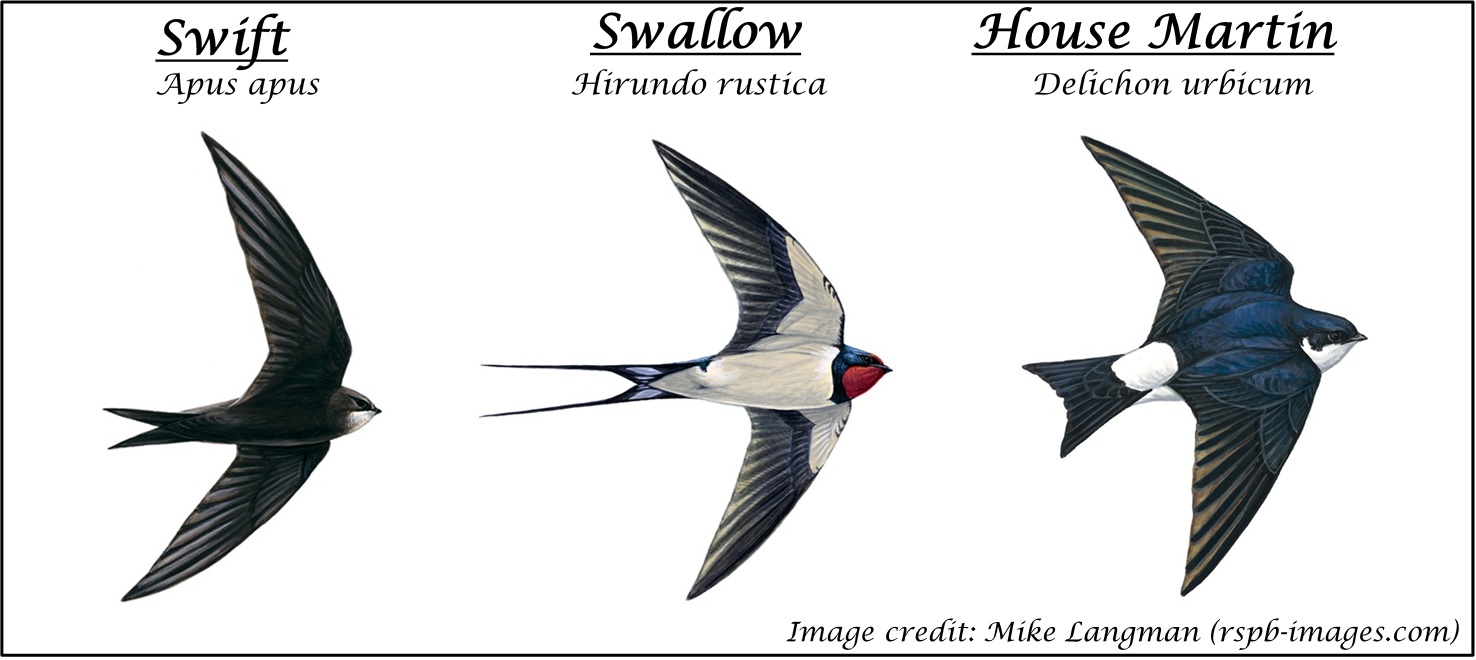Birding beginnings: Swift, swallow or martin?
In the last couple of months you may have noticed fast birds darting around high in the sky. These aerial acrobats comprise of swifts, swallows and martins. All of which migrate from Africa to breed across the UK, many choosing to nest in areas associated with our patch. These birds are highly aerial and spend most of their time on the wing – so you may never get a close glimpse of them! Their aerodynamic shape and similar character can make them difficult to tell apart in flight, but fear not, as once you know what to look for – they should be easy to tell apart (I promise)!
- Swift
A distinct sickle-shape should give away this bird, with extreme long and narrow wings which curve back. They are extremely fast fliers, and often glide around on stiff wings. They are often seen circling above urban areas in the evenings, making a racket with their screaming call. Unlike swallows and martins, swifts have a dark underside, so keep your binoculars handy – that’s if you can keep up with them!
- Swallow
Unlike the swift, the swallow can occasionally be seen perched, often on telephone wires in proximity to barns (where they love to nest). When perched, you’ll get a good glimpse at their distinct red throats. However in flight colour often won’t be as visible, in which case they will show a pale underside with a dark head and throat. Keep an eye out for long, thin streamers at the outer edge of the tail!
- Martins
The UK has two species of martins, house martins and sand martins. House martins are more common and widespread, whilst sand martins show a patchier distribution. Expect to see house martins feeding on insects over water. They have a much broader ‘dumpy’ appearance compared to that of the swallow and possess a short, forked tail. Look out for their pale underside with a white head and throat, and a white rump.
Sand martins have a similar shape, but are slightly smaller with a brown colouration. They are colonial nesters and will dig into the side of sandy banks, unlike the other species that are typically associated with buildings.
How can you help?
Swifts, swallows and martins are all facing big population declines in the UK. Swift numbers alone have more than halved in the last 20 years. Please report any of your sightings to BirdTrack.
Warden Nick

